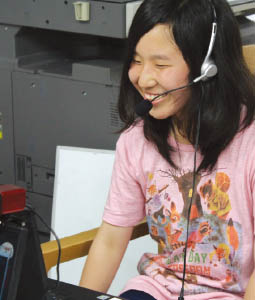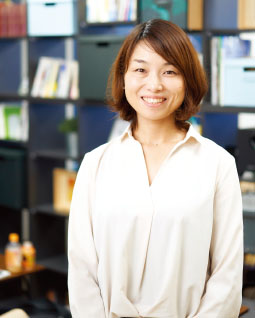Home > Highlighting JAPAN > Highlighting Japan January 2019 > Japanese NPOs Working for Change
Highlighting JAPAN


Helping Teens Chart Their Own Futures
“To create a society in which anyone can develop the power to invent their own future, regardless of their social and economic background” is NPO Katariba’s motto. Katariba head Kumi Imamura describes her NPO’s main activities and plans, which include centers for teenagers in disaster-struck regions that help them find their feet and a future.
Kumi Imamura and a like-minded friend founded the nonprofit organization Katariba in November 2001. At the time, Imamura was a college student having a tough time lining up a job for after graduation in an era known as Japan’s “Employment Ice Age.” She was convinced that even if she went to a good school and start working at a good company, it didn’t mean she would be happy. Imamura soon realized that she wanted to create a society in which people could choose their own futures without being swayed by what they’d been raised with. Together with Yuka Mikayama, who agreed with her views, Imamura began to look into ways to support teenagers and young adults.
Modern society faces many issues, including natural disasters, economic differences, and regional disparities between urban and rural areas. Katariba also considers the lack of confidence young people in Japan feel compared to their peers in other countries a problem, and has a variety of programs designed to stimulate their drive and creativity using approaches different from those of their parents and public administration.
For example, Katariba’s Adachi Base—which operates out of Tokyo’s Adachi Ward—targets children who are dealing with problems at home. These kids don’t want to sit around alone at home, so they go out and tend to get into trouble. Adachi Base was created to be a safe place where they can relax and spend time, receive tutoring support and get into various hands-on experience programs that bolster their independence.
In this way the kids meet lots of people and have many new experiences while maintaining a reassuring connection. Imamura reports that she often hears them say things like, “This is the first time I’d talked about myself so freely.” Adachi Base also provides meals, and when there are hot-pot events with everyone sitting around a table, some of the teenagers realize for the first time that people really do gather together just like they see on TV. According to Imamura, accumulating little experiences like that can be the first step toward the kids deciding what kind of adults they want to be.
Another Katariba project, Collabo-School, is designed to give children in disaster areas a calm place to gather and study. Care for the very young and very old is usually the priority in disaster-hit regions, and teenagers end up being an afterthought. Even though still emotionally fragile, they’re expected to support their region.
That’s where Katariba and Collabo-School provide support, specifically for those fragile youths. There are currently five Collabo-School locations: Onagawa in Miyagi Prefecture, Ohtsuchi in Iwate Prefecture, and Hirono in Fukushima Prefecture—areas affected by the 2011 Great East Japan Earthquake—as well as Mashiki in Kumamoto Prefecture (which was affected by the 2016 Kumamoto Earthquake) and Yakage in Okayama Prefecture, which was hit by heavy rains in 2018. Imamura says they hear from current college students who attended Collabo-School seven years ago that say, “If it hadn’t been for Katariba, I wouldn’t have chosen to go to college. I understood how big the world is and the value of learning.”
In the future there may well be more natural disasters and widening disparities. However, Imamura believes that “since Katariba was founded eighteen years ago, we’ve created a more civil society.”
Imamura wants to make a world in which no matter where disaster strikes, people will come running and adults will reach out to help teenagers. She plans to continue her efforts to build a society that fosters the drive and creativity of all teenagers in Japan.
© 2009 Cabinet Office, Government of Japan








